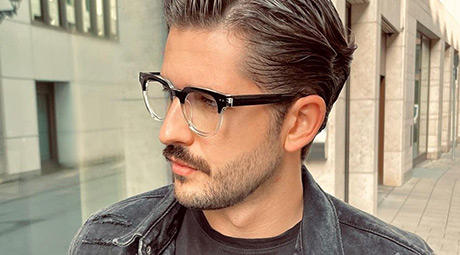What Is Myopia and How to Correct It?
Myopia, or nearsightedness, is when you can see nearby objects clearly but have trouble focusing on things that are farther away. It's becoming more common these days, especially with everyone spending so much time looking at screens and not enough time outside. In this article, we'll break down what myopia is and explore different ways to correct it, like wearing glasses, using contact lenses, considering laser eye surgery, and even trying natural therapies.
What Is Myopia and Why Does It Happen?
Myopia, also called nearsightedness, is a common vision condition in which one can see objects that are near clearly, but objects that are far away appear blurred. It occurs when the shape of the eye causes light to focus in front of the retina instead of on the retina. Various risk factors contribute to the development of myopia:
● Myopia Often Runs in Families Due to Genetics: A child is more likely to develop myopia if one or both parents are nearsighted.
● Too Much Screen Time Can Cause Nearsightedness: Prolonged activities such as reading, working on computers, or overusing smartphones and tablets can lead to myopia because of the strain it puts on the eyes.
● Spending Less Time Outdoors May Lead to Myopia: Children spending fewer hours outdoors are more prone to this disorder, as natural light and seeing things at a distance have a beneficial effect on the eyes.

How Can Myopia Be Corrected?
There are several methods to correct myopia, each with its own advantages and considerations:
Choose Glasses or Contacts to Correct Myopia:
Procedures like LASIK (Laser-Assisted In Situ Keratomileusis) and PRK (Photorefractive Keratectomy) are popular surgical options that permanently reshape the cornea to correct vision. While these procedures can significantly reduce or eliminate the need for glasses or contacts, they come with considerations such as eligibility based on age and eye health, potential risks, and recovery time.
Use Ortho-K Lenses Overnight for Daytime Clarity:
This involves wearing specially designed rigid contact lenses overnight to temporarily reshape the cornea, providing clear vision during the day without the need for lenses. Ortho-K is particularly suitable for children and young adults with mild to moderate myopia and can also help slow the progression of myopia in children.
Explore Natural Methods to Support Your Eye Health:
Some people explore natural methods like eye exercises or vision therapy to manage myopia. These approaches aim to strengthen eye muscles and improve focus flexibility. However, while they may support overall eye health, their effectiveness in significantly correcting myopia is limited and not scientifically proven to replace other corrective measures.

How Do I Choose and Understand Prescription Eyewear for Myopia?
Selecting the right prescription eyewear for myopia involves several important considerations to ensure both comfort and effectiveness.
Pick the Right Glasses or Contacts for Comfort and Protection
● For Glasses: When selecting the right glasses, consider the lens material carefully. Polycarbonate or high-index lenses are excellent choices because they are thin and lightweight, which enhances comfort significantly. As for frame style, it’s important to choose something that matches your personal taste and fits well, ensuring the glasses stay securely in place during daily activities. Additionally, think about the coatings on the lenses: anti-reflective coatings can reduce glare, while UV protection coatings are essential for safeguarding your eyes from harmful sun rays.
● For Contact Lenses: When it comes to contact lenses, the material type is crucial for both comfort and eye health, so choose wisely. Consider whether daily wear or extended wear lenses best suit your lifestyle needs. It's also important to ensure that the lenses provide good moisture retention to keep your eyes well-hydrated throughout the day.
Know Your Prescription Details for Accurate Vision Correction
Your glasses or contact lens prescription contains specific terms and numbers indicating the necessary corrections:
● Sphere (SPH): Represents the lens strength needed to correct nearsightedness, shown as a negative number.
● Cylinder (CYL) and Axis: If you have astigmatism, these values indicate the additional corrections needed for the uneven curvature of your eye.

Take Care of Your Glasses and Contacts Properly
Taking care of your eyewear prolongs its life and maintains clear vision:
● For Glasses: Clean them regularly with a microfiber cloth and store them in a protective case to prevent scratches and damage.
● For Contacts: Practice good hygiene by using appropriate cleaning solutions and following replacement schedules to avoid eye infections.
● Regular eye exams are crucial for keeping your prescription current and monitoring any changes in your vision.
Keep Your Vision Clear: Take Control of Myopia
Taking charge of your myopia is essential for keeping your vision sharp and your eyes healthy. You have plenty of options like glasses, contact lenses, laser surgery, or orthokeratology, so pick what fits your lifestyle best. It’s important to understand how to choose the right eyewear—know your prescription details and look for features like lens materials and coatings that meet your needs.
Don’t skip regular eye exams; they help keep your prescription up-to-date and catch any changes in your vision early. Be proactive by consulting with an eye care professional to find the best solutions, ensuring clear sight for years to come.



















